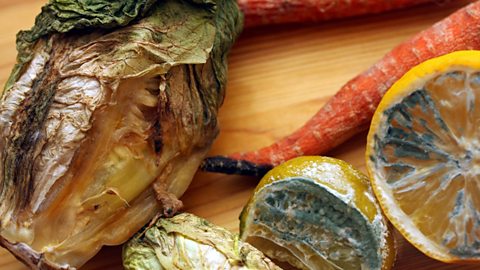Oxidation reactions in food

Foods which contain edible oils will spoil once exposed to oxygen from the air due to oxidation reactions.
This chemical change results in a bad flavour and smell from the food. If left exposed to air for even a short time, butter will spoil due to the formation of butanoic acid as the butter is hydrolysed.
Antioxidants are molecules that play an important role in preventing our food from spoiling too quickly by stopping oxidation reactions from taking place.
The antioxidant molecules are reducing agents, they cause other substances to be reduced while being oxidised themselves.
Many brightly coloured fruits and berries are rich in complex antioxidant compounds called polyphenols. One of the simplest antioxidants is vitamin C.
Vitamin C molecules can react to form dehydroascorbic acid by losing two hydrogen atoms from the hydroxyl groups attached to the ring part of the molecule, forming two additional ketone (carbonyl) groups.
The loss of hydrogen indicates an oxidation reaction (increasing the oxygen to hydrogen ratio) and the molecule will also lose two electrons.
This supply of electrons will prevent oxidation in other chemicals, causing them instead to be reduced.
This change from vitamin C to dehydroascorbic acid can be represented by an ion-electron equation:
\(C_{6}H_{8}O_{6} \,\,\,\,\,\,\rightarrow\,\,\,\,\,\,\, C_{6}H_{6}O_{6} + 2H^{+} + 2e^{-}\)
\(vitamin\,\, C\,\,\,\,\,\,\,\,\,\,\,\,\,\,\,\,\,\,\,\,\,\, dehydroascorbic\,\, acid \)
Both the loss of electrons and the removal of hydrogen from the molecule indicate that this is an oxidation reaction, showing that as an antioxidant, vitamin C is itself oxidised.